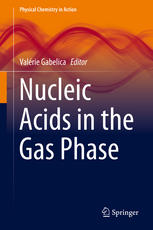

Most ebook files are in PDF format, so you can easily read them using various software such as Foxit Reader or directly on the Google Chrome browser.
Some ebook files are released by publishers in other formats such as .awz, .mobi, .epub, .fb2, etc. You may need to install specific software to read these formats on mobile/PC, such as Calibre.
Please read the tutorial at this link: https://ebookbell.com/faq
We offer FREE conversion to the popular formats you request; however, this may take some time. Therefore, right after payment, please email us, and we will try to provide the service as quickly as possible.
For some exceptional file formats or broken links (if any), please refrain from opening any disputes. Instead, email us first, and we will try to assist within a maximum of 6 hours.
EbookBell Team

4.0
76 reviewsThis book gives physical chemists a broader view of potential biological applications of their techniques for the study of nucleic acids in the gas phase. It provides organic chemists, biophysicists, and pharmacologists with an introduction to new techniques they can use to find the answers to yet unsolved questions. Laboratory sciences have bloomed with a variety of techniques to decipher the properties of the molecules of life. This volume introduces techniques used to investigate the properties of nucleic acids in the absence of solvent. It highlights the specificities pertaining to the studies of nucleic acids, although some of the techniques can similarly be applied to the study of other biomolecules, like proteins. The first part of the book introduces the techniques, from the transfer of nucleic acids to the gas-phase, to their detailed physico-chemical investigation. Each chapter is devoted to a specific molecular property, and illustrates how various approaches (experimental and theoretical) can be combined for the interpretation.
The second part of the book is devoted to applying the gas-phase approaches to solve specific questions related to the biophysics, biochemistry or pharmacology of nucleic acids.